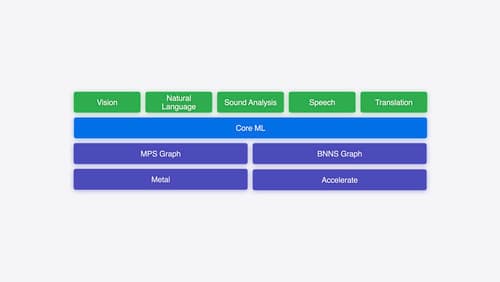Converting elms to coreml
Asked on 2024-08-05
1 search
To convert models to Core ML, you can follow these steps as outlined in various WWDC sessions:
-
Model Preparation:
- Start with a trained model, typically in a format like PyTorch.
- Use Core ML tools to convert the model into the Core ML format. This process involves specifying inputs and outputs, and potentially states if the model requires them (e.g., for key-value caching in transformers).
-
Optimization:
- Core ML tools offer various optimization techniques such as quantization and efficient key-value caching. These techniques help in reducing the model size and improving performance on Apple hardware.
- You can also use model compression techniques to further optimize the model. For example, using linear quantization to reduce the model size.
-
Integration:
- Once the model is converted and optimized, integrate it into your app using Apple's frameworks. Core ML automatically segments the model across CPU, GPU, and neural engine to maximize hardware utilization.
- You can manage the execution of machine learning tasks using frameworks like Metal Performance Shaders for GPU workloads or Accelerate for CPU tasks.
For more detailed steps and code examples, you can refer to the following sessions:
- Explore machine learning on Apple platforms (09:33)
- Bring your machine learning and AI models to Apple silicon (00:59)
- Platforms State of the Union (16:37)
These sessions provide comprehensive guidance on converting, optimizing, and integrating machine learning models on Apple platforms.

Platforms State of the Union
Discover the newest advancements on Apple platforms.

Explore machine learning on Apple platforms
Get started with an overview of machine learning frameworks on Apple platforms. Whether you’re implementing your first ML model, or an ML expert, we’ll offer guidance to help you select the right framework for your app’s needs.

What’s new in Create ML
Explore updates to Create ML, including interactive data source previews and a new template for building object tracking models for visionOS apps. We’ll also cover important framework improvements, including new time-series forecasting and classification APIs.
